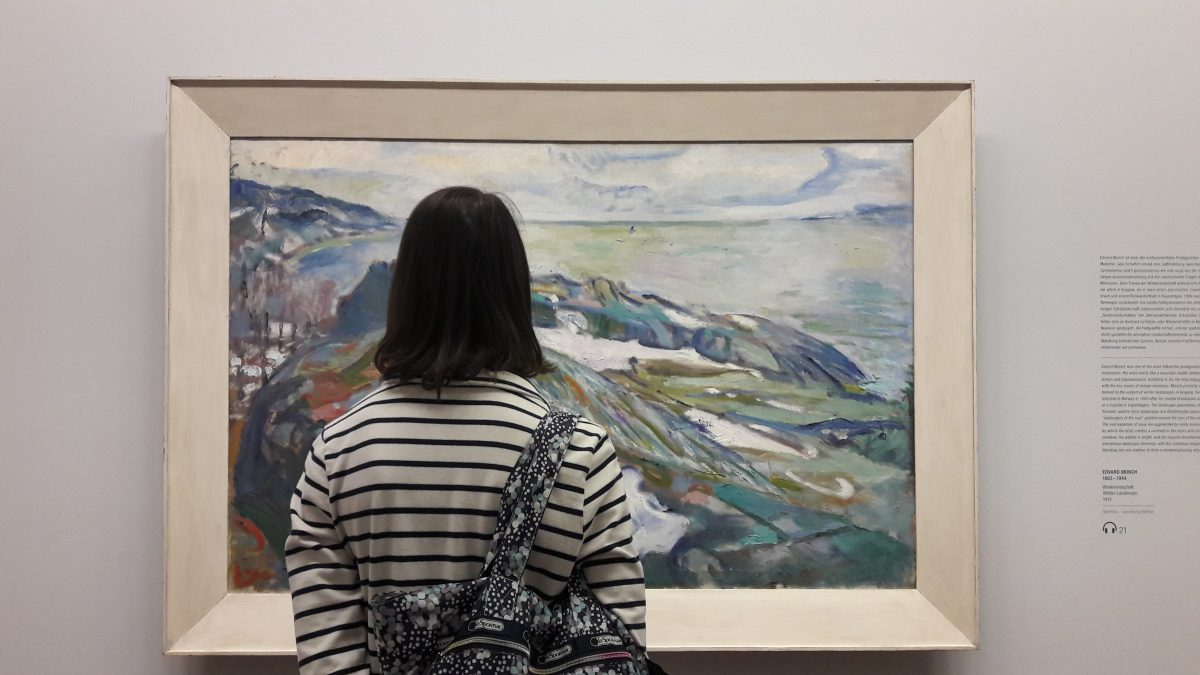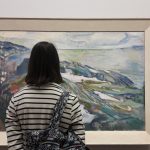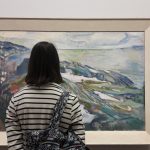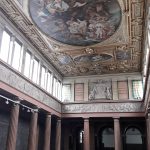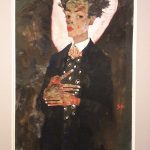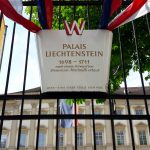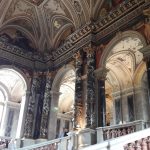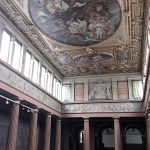During the final week of May 2017 the students and interns at the Hamilton Kerr Institute travelled to Vienna for our annual study trip. Two members of staff, Morwenna Blewett and Lucy Wrapson, joined us on the trip, and we are very grateful to them for organising all of the interesting visits that we had during our stay. Throughout the week we were able to explore the vast collections of artworks held by the Viennese cultural institutions, whilst also taking a peek behind the scenes through exclusive visits to the conservation studios at the Palais Liechtenstein and the Kunsthistorisches Museum.
The Albertina & Le Palais Liechtenstein
During our first day of studio visits we spent our free morning visiting the Albertina: a building with original neoclassical interior decoration, which boasts a broad collection of modern art pieces. Whether your preference is Edvard Munch, Pablo Picasso or the less-known works of the German Expressionist Karl Hofer, this museum has something for everyone. Until June 18 2017 the Museum is also showcasing an exhibition of graphic works by the Austrian master Egon Schiele: a must see for those of you who are venturing to Vienna in the near future.
Following a picnic lunch in sparkling sunshine at Park Burggarden we headed off to our first conservation studio visit at the Liechtenstein Garden Palace. To start off our visit we were given a private tour of the palace’s galleries by head of conservation, Dr Robert Wald. I think I speak for all of us in saying that we were blown away by the splendour of the palace’s art collection. With works ranging from Italian quattrocento panel paintings to large-scale tapestry designs by Peter Paul Rubens, the Princely Collection is perhaps one of the most thoughtfully put-together and well-preserved group of artworks that I have had the pleasure of viewing. A particular favourite was the seventeenth-century carriage that is on display in the main entrance hall of the palace, seemingly plucked from the prop selection of Disney’s 2015 Cinderella remake.
After our tour in the galleries Dr Wald took us to see the palace’s conservation studio, situated in a purpose-built adjacent building. Here we were introduced to the studio’s conservation staff and were also invited to take a look at their current treatment projects. It was interesting to note the similarities and differences between the conservation practices of Wald’s studio with those commonly employed at the HKI. A notable difference was their approach to retouching, which makes use of gouache or watercolour base layers, followed by thinly applied glazes using pigments bound in an oil-resin medium. Although this method differs from the HKI’s use of egg tempera and Gamblin colours, we found that the Austrian tradition offered a comparable result, whilst also serving as an example of differing approaches within the western conservation world.
Kunsthistorisches Museum
Our second day included a visit to the conservation studio of the Vienna Museum of Fine Arts. We spent the morning exploring the collection itself, which was developed from the art collections of the Habsburg Family. This colossal collection is one of the largest of its kind and boasts works by Titian, Rubens and Pieter Bruegel the Elder. I particularly enjoyed seeing Bruegel’s The Great Tower of Babel for the first time, a painting that I had long admired since my adolescent years.
Our tour of the Museum’s conservation studio was very interesting as well. Amongst other things, we were introduced to the treatment of a panel painting by Lucas Cranach, as well as a village fête scene by Bruegel the Elder. It was also interesting to observe the consistencies and differences between the conservation approaches of the Museum with those of the studio at the Palais Liechtenstein. A notable similarity is their shared preference for the use of natural resin varnishes, as well as the latter studio’s approach to retouching. Another aspect of the Austrian conservation tradition, which is less-commonly employed in British institutions, is the thinning of old varnishes, as opposed to their complete removal. The opportunity to learn about the conservation practices and traditions of another country was a fascinating experience, teaching us that there is more than one approach when it comes to restoring paintings.
Institute of Conservation & Akademie der Bildenen Künste
Our final day of visits included tours of the two major conservation schools in Austria. The first was the Institute of Conservation, where we met with Prof. Gabriela Krist. The school offers a variety of conservation specialisms, including textiles, objects and metalwork, as well as paintings and polychrome sculpture. The focus of our visit was the paintings conservation department, although it was also interesting to see the types of objects that are conserved in the other departments as well.
Our second visit for the day was to the Akademie der Bildenen Künste. We were greeted by the head of the institute, Prof. Wolfgang Baatz, who showed us around the conservation studios. Like the Institute of Conservation, the Akademie offers courses in objects, paintings and polychrome sculpture conservation. However unlike the former school, the Akademie also has a wall paintings conservation department, as well as a newly established department that focuses solely on the conservation of contemporary artworks. The issues involved with dealing with contemporary art pieces were a particularly interesting aspect of our visit, as it is a sphere of conservation that we rarely get to deal with at the Hamilton Kerr Institute.
Our Final Day- Gustav Klimt at the Belvedere
Sad as we were to be leaving Vienna after such a short stay, we decided to make the most of our last full day by visiting the Belvedere Gallery– home to The Kiss by Gustav Klimt, as well as an impressive collection of Austrian art dating from the Middle Ages to the present day. Needless to say, this last visit served as the icing on top of the cake- or the chocolate stamp on top of the sachertorte if you will. My particular favourites included Egon Schiele’s Mother with Two Children, a beautiful, serene painting that I feel displays the artist’s mastery of form and colour, as well as Klimt’s series of square-format flower paintings. The latter paintings are displayed in a room of their own at the Belvedere, in the section preceding the infamous Kiss painting. It was easy to feel completely lost in this room, as the paintings seem to project their subject matter outwards, whilst also drawing the viewer in, demonstrating Klimt’s simultaneous mastery of the surreal and the realistic- it was difficult to ascertain where the paintings ended and the illusion began.
To sum up, we left Vienna with our minds saturated with images of art and our bellies full of Wiener schnitzel, apple strudel and more than a glass or two of white wine spritzer. I would definitely recommend a visit to this gorgeous city to any art-lover, or indeed anyone interested in seeing a city that is full of history, quirky coffee shops and delicious food. Auf Wiedersehen Wien, bis zum nächsten Mal!
Emma Jansson, 1st year Post-Graduate Intern (2016-2018)
About the author
Emma Jansson graduated from the Courtauld Institute of Art in 2016, having completed the three-year Postgraduate Diploma in the Conservation of Easel Paintings. She also holds a BA in History of Art/Archaeology and Japanese Studies from the School of Oriental and African Studies, University of London. Emma has experience working in both private conservation studios in London and public institutions. Her most recent placements include internships at the Victoria & Albert Museum and the National Maritime Museum in Greenwich, as well as an in situ project at the Houses of Parliament, Westminster Palace. She is also involved in the technical analysis of artworks. Her final-year thesis at the Courtauld Institute focused on the materials and technique of the Impressionist artist Alfred Sisley. Emma is continuing her interest in technical art history at the HKI, where she is involved in several research projects, including a study on the uptake of artificial ultramarine by British artists in the nineteenth century.
To contact Emma: ej309@cam.ac.uk

